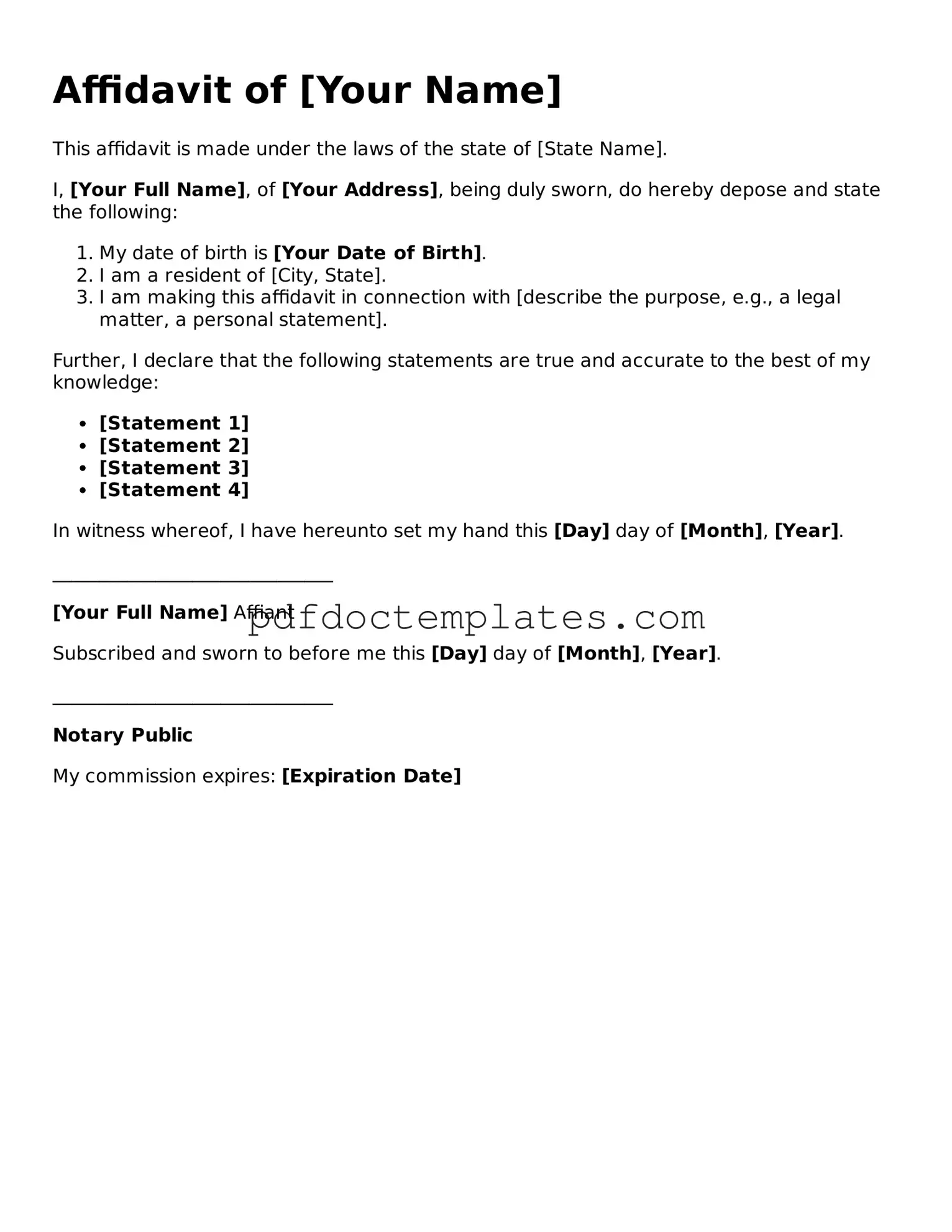Affidavit of [Your Name]
This affidavit is made under the laws of the state of [State Name].
I, [Your Full Name], of [Your Address], being duly sworn, do hereby depose and state the following:
- My date of birth is [Your Date of Birth].
- I am a resident of [City, State].
- I am making this affidavit in connection with [describe the purpose, e.g., a legal matter, a personal statement].
Further, I declare that the following statements are true and accurate to the best of my knowledge:
- [Statement 1]
- [Statement 2]
- [Statement 3]
- [Statement 4]
In witness whereof, I have hereunto set my hand this [Day] day of [Month], [Year].
______________________________
[Your Full Name] Affiant
Subscribed and sworn to before me this [Day] day of [Month], [Year].
______________________________
Notary Public
My commission expires: [Expiration Date]
